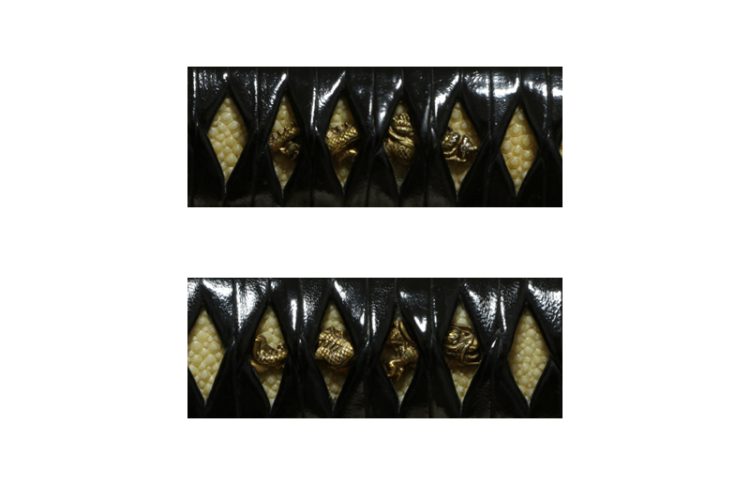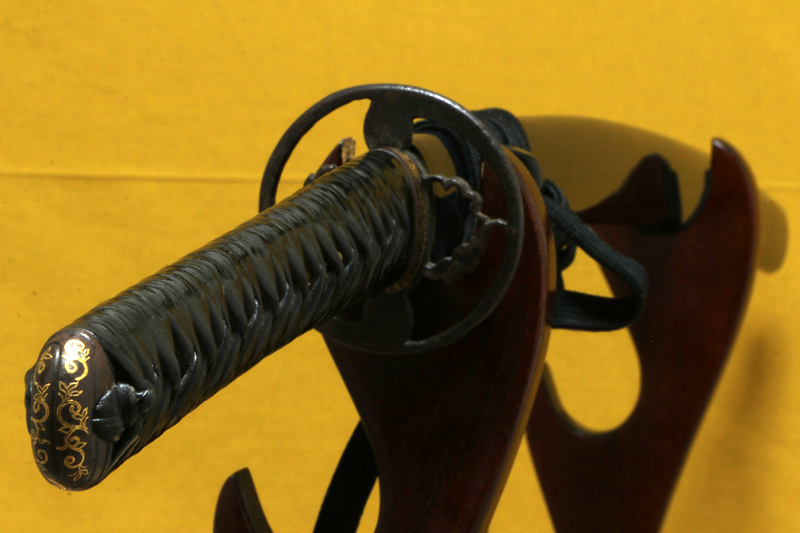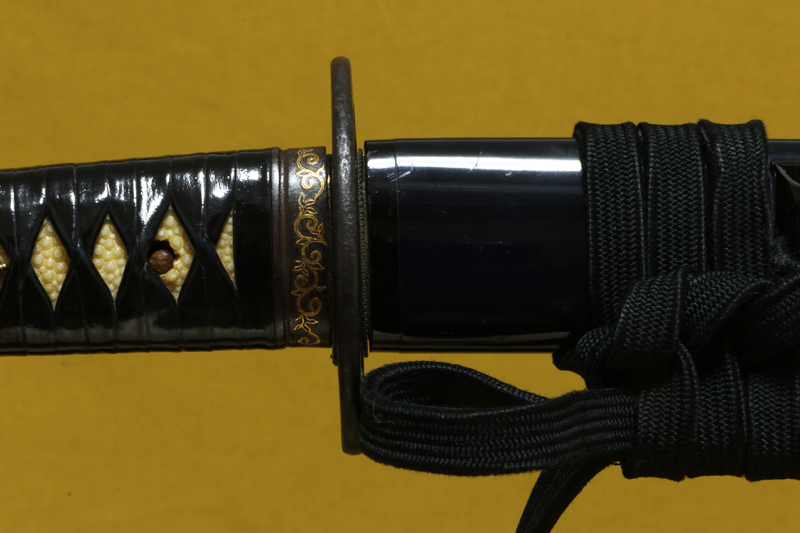説明
「刀姿 sword figure」
体配は鎬造り庵棟、身幅太く重尋常、鳥居反り中鋒。茎は生で化粧鑢がかかり、茎尻は栗尻と成る。
「地鉄 jigane」
地鉄は板目肌に柾目が交じり地沸付く。
「刃紋 hamon」
刃紋は互の目丁子乱れで、足良く入り、刃緑小沸付く。刃中は葉働き。金筋、砂流しよくかかる。帽子は乱れ込み小丸に返る。
「特徴 detailed」
三河國藤原住元久、本名は橋本勇男。昭和九年十月生まれ。愛知県蒲郡市住。財団法人日本美術刀剣保存協会会員、全日本刀匠会会員、新作刀展入選二十七回。昭和二十五年より父藤原武則の 元で修行し、昭和四十二年十一月に文化庁より作刀承認を受ける、元久刀匠の刀は戸山流の創始者、中村泰三朗先生の愛刀としても有名です。
本作、身幅が広く豪壮ですが重は薄くバランスが良く、手持ちは軽いです。居合で使用していたため、少しヒケが有りますが、概ね良好です。拵の状態も良く、直ぐに居合、試斬で使えます。
Mikawa no Kuni Jū Fujiwara Motohisa, real name Hashimoto Isao, was born in October 1934 and resides in Gamagori City, Aichi Prefecture. He is a member of the Nihon Bijutsu Token Hozon Kyokai (NBTHK) and the All Japan Swordsmith Association. He was selected 27 times in the New Sword Exhibition. Starting his training in 1950 under his father Fujiwara Takenori, he received official swordsmith approval from the Agency for Cultural Affairs in November 1967. Motohisa’s swords are also renowned for being the favored blades of Nakamura Taizaburo, the founder of the Toyama-ryu style.
This particular sword, while broad and imposing, has a thin blade and excellent balance, making it feel light in hand. Due to its use in iaido, it has a few minor nicks, but overall it remains in good condition. The koshirae (fittings) are also in excellent shape, allowing it to be used immediately for iaido or tameshigiri (test cutting).
「拵 Koshirae」
鍔は江戸時代の物です。また全体的にコンディションは良いです。
ハバキ(habaki) :銀無垢一重の腰祐乗。
鍔(tsuba) :鉄地透かし鍔。
縁頭(futikasira):肥後鉄地唐草金象嵌。
目貫(menuki) :金地龍の図。
柄(tsuka) :鮫は親粒が付く。柄巻は牛表革黒の諸捻り巻き。
鞘(saya) :黒呂。
「刀剣の状態 condition of blade」
研:古研ぎのためヒケが有ります。
傷:欠点に成るような傷は有りません。



































